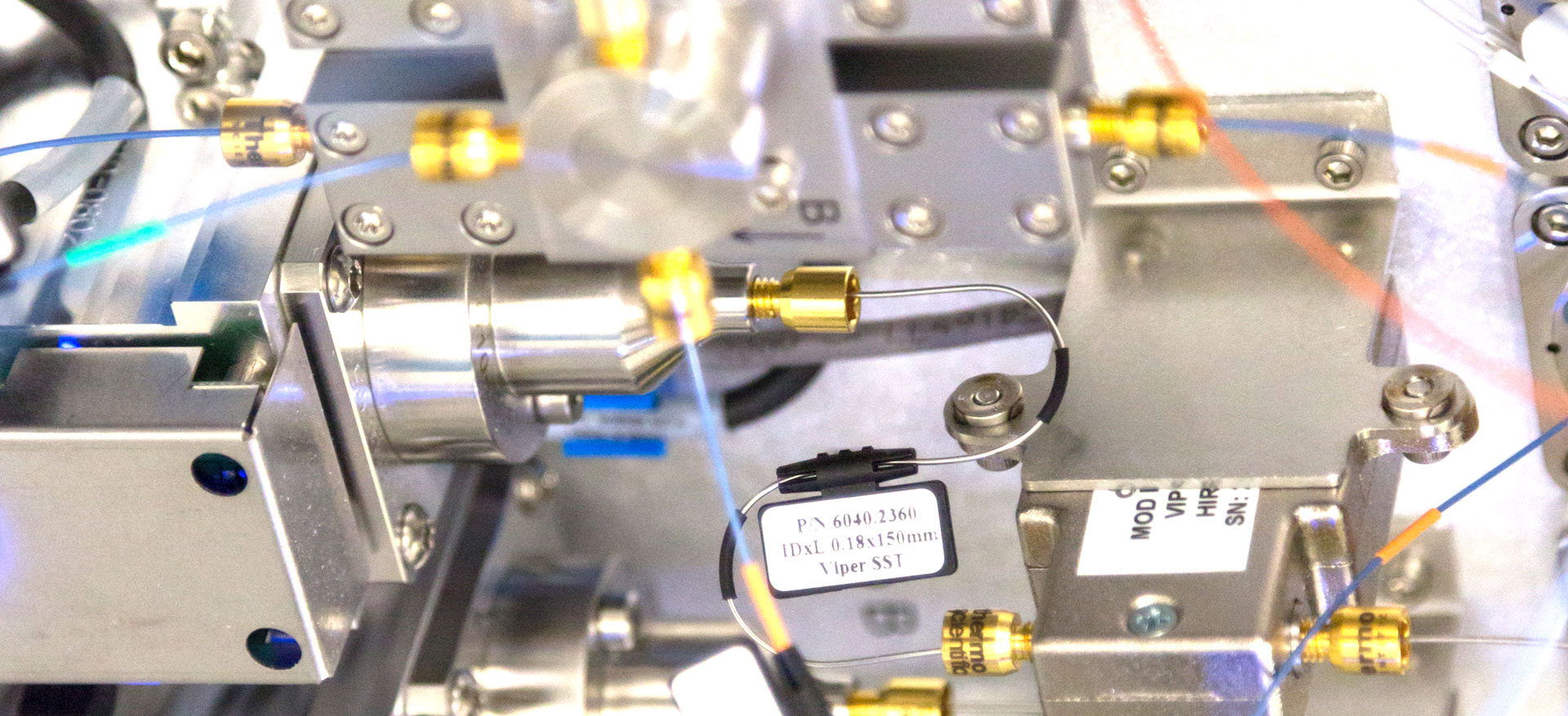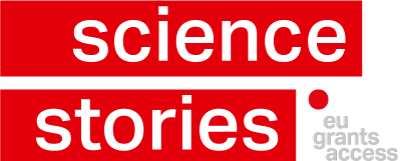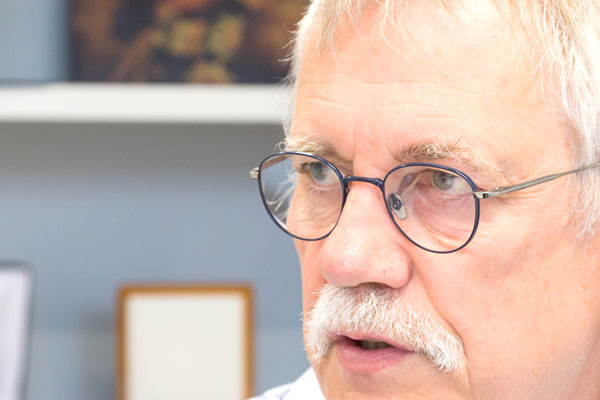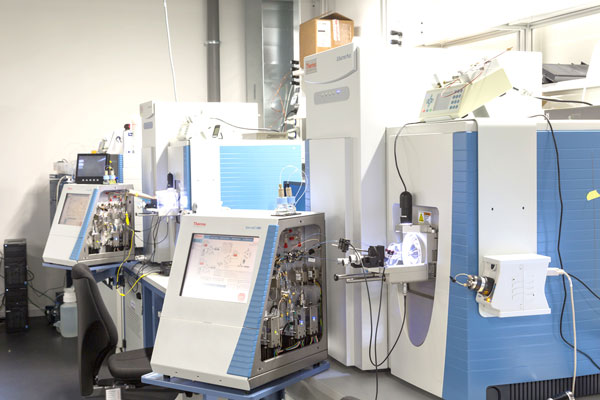
A cell and a football club have a lot in common
Rudolf Aebersold, Professor of Molecular Systems Biology at ETH Zurich, is among the international pioneers of modern molecular biology. With his novel measurement methods of proteins, he has contributed decisively to a new perspective on the life processes within cells and he is considered one of the fathers of the new research areas proteomics and systems biology. In the following interview with Rolf Probala he talks about his work, his experiences and his conclusions after more than 30 years of cutting-edge research.*
You are one of the pioneers of proteomics. What is your research about exactly?
Rudolf Aebersold: In a human cell, you encounter about as many protein molecules as there are people living on this planet, that is about eight to nine billion. This number is incredible if you consider how small a cell actually is. These proteins are very densely packed within a cell that only weighs about one thousandth of a microgram. We try to separate proteins from an individual cell and measure them in a mass spectrometer. This is one research focus and we are close to achieving our goal. A second focus is that we not only examine proteins and their activities separately, but instead we observe their behaviour in context of other molecules.
What do you measure precisely?
You find about ten thousand different types of proteins within a human cell. We measure the amount of the individual proteins that are verifiable and we measure their amino acid sequence. They thereby serve quasi as «classification» as each type of protein has its typical amino acid sequence. With this, we can unambiguously identify the proteins.
And what do we know once we have identified the number and types of proteins in a cell?
As molecular biologists, we consider the cell to be a reactor in which hundreds of biochemical processes take place simultaneously. They define the properties of the cell. Almost each of these processes is executed and controlled by proteins. Once we can measure and distinguish proteins, we are able to better understand how these biochemical reactions work, how they interact and how they are controlled.
You analyse entire groups of proteins. What is at issue here?
The proteins in a cell usually do not act as an individual molecule but in context with other molecules. Over the past years, we have invested a great deal in understanding how protein molecules interact within a group. The finding that such groups perform important processes in our body is not new. A typical example thereof is the protein called haemoglobin in our blood cells, which binds oxygen in our lungs and carries it to our muscles and the brain. This process was analysed thoroughly and described seventy years ago. It appeared that haemoglobin consists of a compound of four protein units that made the binding and delivering of oxygen possible in the first place. Haemoglobin is just one of many examples that shows that a complex of proteins may have other functional properties than an individual protein. We wanted to systematically analyse this phenomenon in order to understand how these groups of proteins form within a cell and how they change based on interior and exterior influences. This is the research topic for which we successfully applied for an ERC Grant four years ago.
Besides the proteome measurements and the research of protein complexes we have a third focus: Establishing a meaningful connection of the measurement data of the different research areas dealing with cells. Today’s technological possibilities allow to measure a great number of various things. For example, you can measure the metabolites, the «intermediate products» of the metabolism, in a cell. You can measure the nucleic acids which form the genes. This is the vast field of genomics. All these individual measurements reveal something about the same cell at a specific moment in time. We now try to collect all of this data and integrate it into a model in order to obtain an overall picture of the cell.
Some of the data is collected by yourself, other measurement results are obtained from other sources?
Yes, from literature or from the collaboration with other researchers. This is why EU projects are vital for us. There is not a single laboratory in the world capable of conducting all of these measurements and integrating the data all by itself. As a proteomics laboratory, we cannot conduct genomic cutting-edge research as well, as we lack both the capacity and the knowledge. Here, we depend on collaborations that are made possible by large EU projects.
The objective would then be to understand how the bioreactor cell with all its complex processes works?
Yes, and also how these processes react to exterior influences or to changes such as mutations in the genome. This is also very important for the understanding of human diseases, especially for cancer diseases that may appear when the genome of some cells is changed.
Protein measurements are the basis of your research. How can you count and measure the proteins inside a cell?
With the help of mass spectronomy. This technique was invented about a hundred years ago and was highly successful in many research areas. However, it could not be used for large biological molecules until some thirty years ago. Mass spectronomy is based on the conversion of the molecule that we want to measure into an ionised state. Ionisation means that it must acquire an electric charge, e.g. by the addition or removal of a proton or an electron. For a long time, large molecules such as those of proteins could not be ionised. They would break during the ionisation process. It was not until the late eighties when two methods were invented that made it possible to convert large fragile molecules into this ionised state and, at the same time, get them in a vacuum system that is required to perform mass spectrometric measurements. This was perceived as an important breakthrough in protein research.
Eventually, this breakthrough has led to the new specialisation called systems biology. How would you describe this field to a layperson?
The objective of systems biology is to see the cells as an integral molecular system; to understand how the individual molecules are arranged within the cell and how they interact in the group, as part of a «club». You can describe a football club in detail by measuring the height, weight, age and fitness level of each player. However, the football club does not function by these numbers alone, it also takes a chairman, a board, a coach and a training programme. The football club is not only characterised by the properties of its individual members but also by their collaboration. The same is true for a cell. We can well measure the single molecules of a cell and these results are necessary. But they are not sufficient to understand the properties of a cell. Systems biology is based on this finding when, back in the mid-nineties, we were able to measure entire genomes all of a sudden. Now we could predict which proteins would be produced by this or that genome. Or, to stay with the metaphor of the football club: We also knew the club statutes, the list of members and the individual players. But we could still not predict their interaction, why they were successful and how dynamics would change with the arrival of a new coach, for example.
How did you discover systems biology for yourself?
I have always been interested in biochemical processes and worked in a department at the University of Washington in Seattle during the nineties where this systems approach, driven by genomics, gained great momentum. Throughout my earlier educational stages I had learned how to work with proteins, how one can isolate and measure them. Now I could benefit from this requisite know-how which I had acquired during my doctorate at the Biozentrum in Basel, the former Ciba-Geigy AG and later during my postdoctoral years at the California Institute of Technology (CalTech). At CalTech, I worked in a biological laboratory that had a division for equipment development as well. The head of the group, Leroy Hood, is a genomics pioneer and convinced that certain processes in molecular biology had to be carried out with higher throughput. This could only be achieved by novel instruments that measure automatically and at high throughput. His group developed some of the devices and employed many engineers. I was able to contribute and this experience has influenced me greatly.
Technology was the driver of the research?
Absolutely. It was the motto in Leroy Hood’s laboratory. Technology drives biology and biology drives technology. If you wait for someone else to build a suitable instrument, you are in arrears from the very beginning. But if you develop the tools and methods yourself, you are well-equipped to enter unexplored territory.
Technologies are renewed rapidly. Every few years, you needed new equipment for your laboratory. Can you tell us about the frequency?
The most important instruments for our research are the mass spectrometers; they are considered vintage after about five years and must be replaced. Currently, we have a round dozen devices in our laboratory. Each is worth about a million Swiss francs. During my time at ETH Zurich, we acquired about three to four generations of new instruments. So, we spent about two million Swiss francs per year on new devices.
How have you been funding your research over all these years?
One of the great strong points of ETH Zurich is its long-term investment in its researchers, that it generously equips them financially and thus enables them to explore uncharted waters. For me, this institutional funding by ETH Zurich was a kind of venture capital to discover new avenues. When they proved promising, new research projects would arise and I would then use third-party funding.
Which part played the funding via EU Grants in all this?
EU Grants have been extremely important. Over the years, we have received way over ten EU Grants. Many of them were Marie Skłodowska-Curie Fellowships for the promotion of young scientists, some were group-oriented project contributions and two were ERC Grants. What is more, we participated in many EU collaboration projects.
Why did you study biology?
Back at my Swiss high school, I had a very progressive biology teacher who told us about the revolutionary findings in molecular genetics which, at the time, were absolutely novel. I was fascinated and, after my school leaving examination, I started looking for a university in Switzerland that practised this kind of molecular biology. In Bern, where I come from, molecular biology was part of the medical studies, but I did not want to study medicine first. In Zurich I had the hardest time finding an academic advisor whom I could talk to in the first place. So, I travelled to the Biozentrum in Basel and walked up to the reception desk. The man at the counter picked up the telephone, briefly talked to someone from student counselling and then sent me up to the first floor. I was greeted by Werner Arber**, whom I did not know back then. He made time for more than an hour to explain to the high school student from Bern how the Biozentrum worked. That was fantastic and I immediately knew that this was the place for me.
You will retire at the end of September 2019. If you were to stand again at the beginning of your research career, what would be your focus?
I would expedite the synthesis of data from all the specialties of molecular biology, proteomics, genomics and structural biology. I think that this will result in an integral picture of the complexity of biological systems which, eventually, we will be able to develop into a model. What happens in a cell when we prompt a certain mutation? How does the system cell work and how does it react to changes? Under which circumstances does the system cell simply buffer away mutations and when does it change into another state? This kind of questions can only be answered by means of models and we are far from reaching them. In connection with models, though, the fundamental question I ask myself is the following: Is molecular biology a science driven by information technology or chemistry? Today, I believe molecular biology must use the great opportunities of computer science and information technology; in the end, however, it is a science driven by biochemistry.
*The interview was conducted in August 2019
**Werner Arber was awarded the Nobel Prize in Physiology or Medicine in 1978
Proteomik
The proteome is the entire set of proteins that are present under certain conditions (such as temperature, pressure, etc.) at a certain moment in time within a cell (or a living being). Proteomics tries to identify, quantify and understand the functions and interactions of a proteome’s proteins.
Interview with Rudolf Aebersold
Rudolf Aebersold
Rudolf Aebersold studied Biology II at the Biozentrum of the University of Basel, Switzerland, and obtained his PhD in Cell Biology in 1983. From 1984-88 he spent four years as a Postdoc and Senior Research Fellow at the California Institute of Technology (CalTech) in Pasadena. He then transferred to the Department of Biochemistry at the University of British Columbia in Vancouver, Canada, where we worked from 1988-1993 as an Assistant Professor in the Department of Biochemistry. He then moved to the newly founded Department of Molecular Biotechnology at the University of Washington in Seattle, where he consequently became Associate Professor from 1993-98 and Professor in 1998. Together with his research colleagues Leroy Hood and Alan Aderem, Rudolf Aebersold founded the Institute for Systems Biology in Seattle in 2000, a nonprofit biomedical research institution that assumed an international pioneering role in systems biology. In 2004, Rudolf Aebersold was appointed Professor at ETH Zurich and the University of Zurich, where he worked until his retirement in September 2019 in a Double Professorship of Molecular Systems Biology.
Horizon2020 Projects
Rudolf Aebersold has participated in about twenty projects within the European Research Framework Programmes. He was involved in five H2020 projects, of which the ERC AdG is still running.
Horizon 2020 Projects
TBVAC2020: Advancing novel and promising TB vaccine candidates from discovery to preclinical and early clinical development
- Programme: collaborative project “Health”
- Duration: 54 months, 40 partners
- Contribution for ETH Zurich: 350,000 €
https://www.tbvi.eu/for-partners/tbvac2020
PROTEOMICS4D: Proteomics 4D: The proteome in context
- Programme: ERC Advanced Grant
- Duration: 60 months
- Contribution for ETH Zurich: 2,208,150 €
https://cordis.europa.eu/project/rcn/198484
PrECISE: PERSONALIZED ENGINE FOR CANCER INTEGRATIVE STUDY AND EVALUATION, a tool for cancer patient risk-stratification and pers. drug selection through multi-omic data integration
- Programme: collaborative project “Health”
- Duration: 36 months
- Contribution for ETH Zurich: 540,071 CHF
DIAL-IN: Dynamic Integrated structural and proteomic Analysis of the LUBAC complex and its involvement in NF-κB and inflammation
- Programme: Marie Skłodowska-Curie actions, European Fellowship
- Duration: 28 months
- Contribution for ETH Zurich: 175,420 €
https://cordis.europa.eu/project/rcn/205960
GolgiBiosSys: Identification and characterisation of plant Golgi biosynthetic multiprotein systems
- Programme: Marie Skłodowska-Curie actions, European Fellowship
- Duration: 24 months
- Contribution for ETH Zurich: 187,420 €





